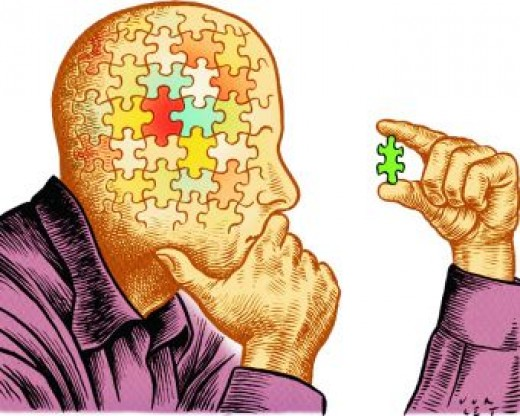To Harness Complex Problems, Do These Three Things

If you aren’t an expert in one skill, you’re in luck.
Our world of increasing technology and connectivity breeds more complexity every day. This means complex problems are here to stay. Unsurprisingly, the number one skill in demand right now is complex problem-solving and it’s predicted to be the most important skill in 2020. The best way to get good at solving complex problems is having the ability to learn rapidly. Cue, learning agility:
“Learning agility is the mindset and practice that allows leaders to continually develop, grow, and utilize new strategies that will equip them for the increasingly complex problems they face in organizations.”
Individuals who have a high ability to learn have been coined polymaths or square-shaped individuals. We’re starting to realize that the world needs fast learners. But how to become a quick learner is the real challenge.
Earlier this year I wrote about the concept of learning agility. While there are three different learning agility frameworks, each framework has these three elements: smart risk-taking, curiosity, and self-awareness. Let’s unpack these three behaviors and look at actionable ways to develop them.
1) Smart Risk-Taking

It’s easy to believe successful leaders and entrepreneurs are always extreme risk-takers. We love to tell heroic stories of the successful leader who dropped out of college and started a company with no back-up plan. But the data show that successful leaders actually hedge their bets.
In a University of Wisconsin study of over 5,000 Americans, entrepreneurs who started their companies while keeping their day jobs were 33% less likely to fail than those who quit their day jobs to start their companies. In addition, some of our favorite entrepreneurs hedge their bets: Steve Wozniak continued working full-time at Hewlett-Packard after inventing the Apple I and starting the company with Steve Jobs. Bill Gates dropped out of Harvard to start Microsoft after he tested out his idea for a year, had investors interested in paying him, and asked his parents to back him financially. What’s more is that instead of dropping out, he actually took a leave-of-absence just in case the idea failed.
A learning-agile individual doesn’t take extreme risks all the time. They balance extreme with safe. But in the risks they take, they go all-out. They embrace ambiguity and being uncomfortable.
Actionable exercises to take more smart risks:
If you’re a team leader, be explicit about what decisions are safe to try (at The Ready we think of these decisions as Type II decisions: they are reversible). Then coach your team adopt a bias toward action. Trust that the data after the decision will show whether it was successful.
Volunteer for roles or projects that are ambitious, uncomfortable, and challenging. Is your organization looking to improve your the hiring process? Volunteer to be on the project committee (or start one) and prepare a proposal or document on how the hiring process could be better. Is your team thinking about using Basecamp instead of Slack to communicate? Go on a Basecamp pilot by assigning it as the main communication tool for one project you’re leading. Then report your project team’s Basecamp experience to the entire team.
Keep two lists: one of all the high-risk bets you’ve made and one of all safe bets you’ve made in the last month. Moving forward, when you make a high-risk decision, add it to the high-risks list. When you make a safe decision, add it to the safe bets list. Then compare both lists on a regular cadence to make sure you’re not pursuing one type more than the other.
2) Curiosity

Questions make room in your mind for answers to fit.
Some say the best way to learn is through experience. Experience in itself doesn’t guarantee learning, but experience with a drive to understand it does. Learning-agile individuals take time to reflect on the experience and understand why certain parts of the experience happened.
Having an insatiable curiosity means you challenge the status quo. You also challenge your own assumptions, and are open to changing your opinion when a better argument presents itself. You believe questions are what Clay Christensen defines as“places in your mind where answers fit”:Only when you want to know the answer will a place in your mind open for an answer to fit. This starts with having curiosity.
Actionable ways to exercise curiosity:
Psychology research shows people increase their willingness to tackle necessary tasks when they actively think about how they could make it more interesting. If you find yourself saying “this is boring” or “I’m not looking forward to this”, try replacing these with “I wonder if I could…” or “What if I thought about it this way…”.
The next time you’re invited to a talk or brown bag at work and aren’t looking forward to sitting through it, try asking yourself a few questions about it such as “Why are others excited about this? How might this help me do my job better?”
One phrase we use at The Ready when we want to know more about anything is “Help me understand…” We always try to make sure we understand each other’s point of view even if we don’t necessarily agree. Phrasing your question with humility makes the experience better for everyone.
3) Self-Awareness

Uber-achievers often fall into the trap of thinking that working hard is the only thing that gets you to the top. What B-school and corporate development programs often fail to emphasize is that self-awareness is as important as work ethic to becoming a leader.
Self-awareness is knowing one’s internal states, preference, resources and intuitions. Striking the balance between confidence and humility starts with being self-aware. Those with a high self-awareness make it a habit to engage in reflection and strive to be one hundred percent honest with themselves. They spend time processing information to better understand their motivations and behavior. They are hungry for candid feedback, and they don’t reject it when it’s constructive or negative.
Actionable exercises to become more self-aware:
“I should/shouldn’t have done that.” Do you say this phrase a lot? (I do!) Every now and then, try replacing this phrase with “I accept that I did that.” Being self-aware is being self-critical and self-accepting.
Research shows that journaling is associated with high job performance. Develop the habit of journaling at the end of your workday or day.
Schedule a Weekly Review every week to reflect on three things: what you accomplished last week, what didn’t go so well, and what you could do next week to make it slightly better than last. Sunday, Monday, or Friday are great days to do it. You could Weekly Review GTD-style and eventually tailor the process so that it works for your specific workflow.
These three ideas aren’t new, and that’s the point. When uncertainty is high, turning to practicality is a great place to start.
Individuals who contribute the most value in this era are rapid learners. They are smart risk-takers, curious, and self-aware. They believe that every problem, no matter how complex it is, a fascinating puzzle waiting to be solved.
